The Congolese artist Bodys Isek Kingelez had a vision of the future — and he built it out of soda cans, bottle caps, cookie packages, matchboxes, colored paper and corrugated cardboard.
More than 30 of his wildly colorful architectural models are now on display in "Bodys Isek Kingelez: City Dreams," a new exhibit at New York's Museum of Modern Art (MOMA).
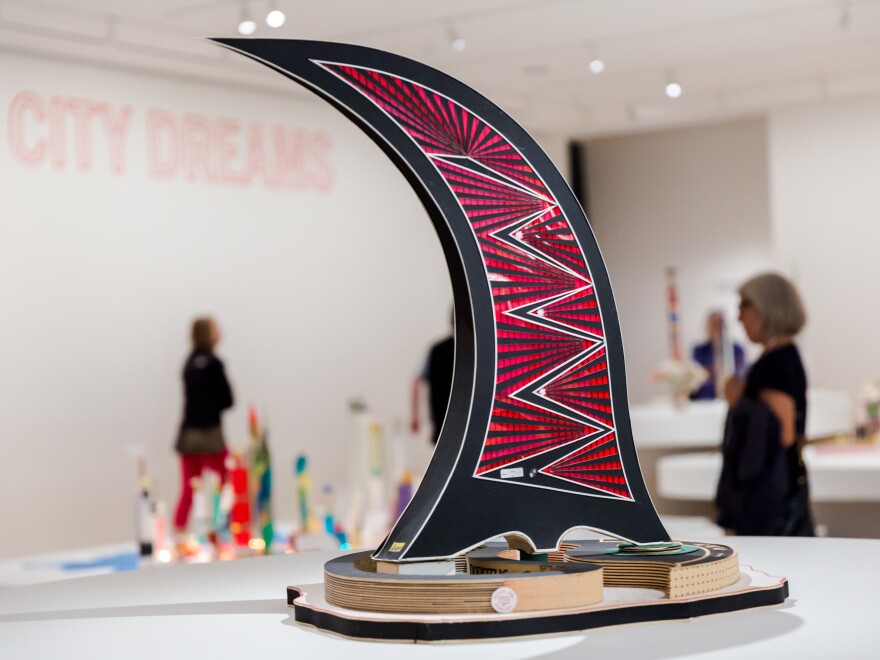
The artist (1948–2015) sculpted fancifully shaped buildings and metropolises decorated with all manner of arcs, curves and ornamental flourishes.

But look more carefully and you also see a visionary urban planner at work. Kingelez's small-scale sculptures reimagine the sprawling urban spaces of his country's capital, Kinshasa, and the small farming village where he was born, Kimbebele-Ihunga. He transforms the resource-rich but turmoil-ridden colonial Belgian Congo of his youth into a utopian urban vision for the self-ruled independent country it became in 1960.
Gone are the congested housing and inadequate sanitation systems, replaced with all the egalitarian infrastructure an urban planner could want: centralized medical facilities, schools and universities, buildings for public gatherings, sports stadiums, places of worship, high-speed transportation and elegant housing for all.
In reality, the Kinshasa to which Kingelez moved in 1970 was a chaotic sprawl. Mobutu Sese Seko, who seized power in 1965 and renamed the country Zaire in 1971 (it's now the Democratic Republic of Congo), had a different focus. He wanted to build ambitious structures to express his power and influence. Chief among these was a skyscraper intended to be among the tallest in Africa — probably the first skyscraper Kingelez ever saw.
That building was the Tour de l'Échangeur, begun in 1971. Though never fully completed, it clearly made an impact, says Sarah Suzuki, the MOMA curator who organized the show. Kingelez's construction "Approche de l'Échangeur de Limete Kin" (from 1981) is a rare example of the artist replicating a real building. But the many other skyscrapers that loom over his sculptures came from his own imagination.
"A city without high-rise buildings is a dead city, a nonexistent city," he said.
"Kinshasa la Belle" (1991) is just one example of a Kingelez fantasy do-over. It also suggests other sources that may have fed his imagination. By the late 1970s, after studying at the University of Lovanium and teaching secondary school, Kingelez had begun working as a restorer of traditional African art at the national ethnographic museum in Kinshasa. At the time, the city around him contained a broad mix of architectural styles from different historical eras: the traditional overhanging roofs and covered verandas common throughout the Congo, colonial Art Deco buildings, Mobutu's palatial structures, industrial postmodern concrete geometric blocks, even pagodas.
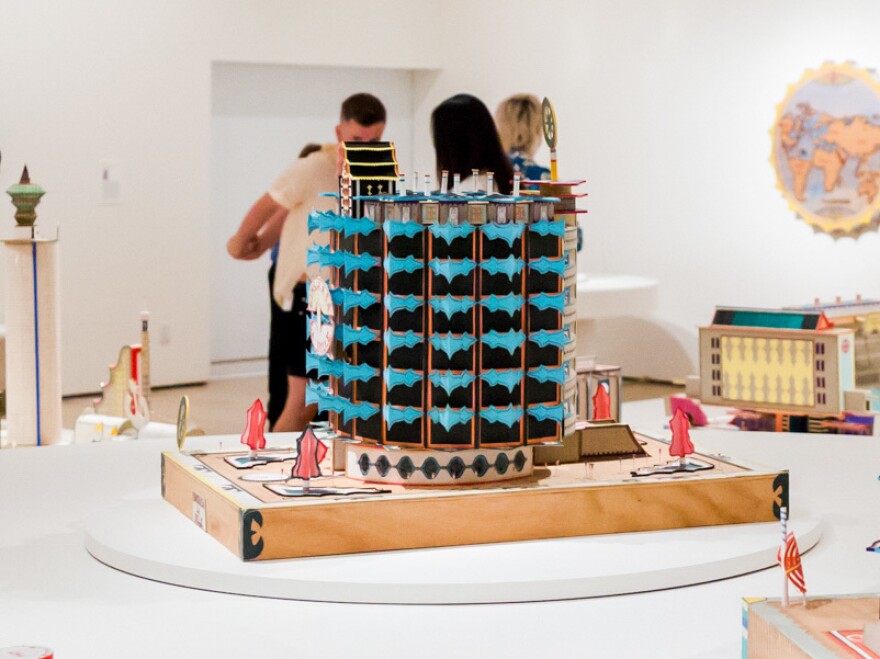
This mélange of influences is apparent in the glamorous rotunda of "Kinshasa La Belle." Adorned with paper cutouts that resemble swarms of blue butterflies, it's crowned with a pagoda and a flagpole sporting a star-like pinwheel. Yet the work's title, Suzuki explains, plays on the city's official nickname, which means "Kinshasa the Beautiful" as opposed to "the rather nasty nickname" of "Kinshasa la Poubelle" ("Kinshasa the Trashcan").
Kingelez, who often referred to himself in the third person, commented on his work, "Kinshasa la Belle as planned by Kingelez is much nicer. Kinshasa's beauty is undying, but still, it has completely gone to waste."
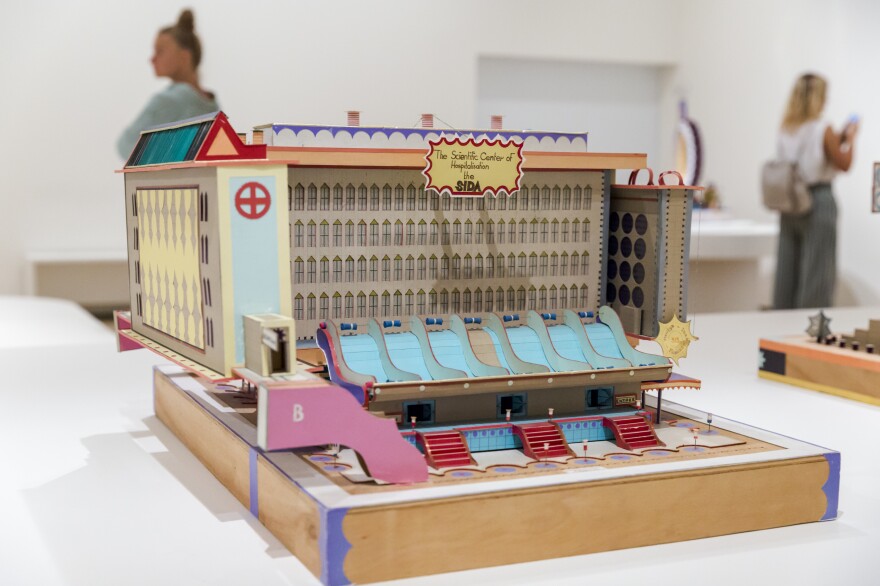
"The Scientific Center of Hospitalisation the SIDA" (1991) demonstrates the importance Kingelez placed on medical research and hospital care. It also shows his attention to real-world events, says Suzuki — in this case the AIDS crisis, which was rampant in Kinshasa from the 1970s on. (SIDA is the French acronym.)
Using paper packaging from malaria medication, among other materials, Kingelez designed a large-scale hospital that would centralize all aspects of research and treatment in two connected buildings. Every floor of one building features long rows of arched, church-like windows, with steamship-like chimneys on top. Carpeted stairs lead visitors to multiple entrances beneath a wavy canopy. Red stars and red crosses appear throughout.
Kingelez was both idealist and optimist. He once told an interviewer, "I'm dreaming cities of peace. I'd like to help the Earth above all."
That's perhaps most apparent in "U.N." He reimagined the campus for the United Nations in 1995 in honor of the organization's 50th anniversary. In contrast to the U.N.'s stolid rectangular building in New York, Kingelez envisioned a festively colored tower of tinted windows with a bulging half-arc in the middle. Yellow and lilac scalloped designs accent the structure. Cutouts of trees and flags abound. Suzuki describes it as "an ebullient celebration." For Kingelez, the decorative stars sprinkled throughout "represent the member countries, which I want to be equal. In this palace, peace is an indispensable tool for the democracy of nations."
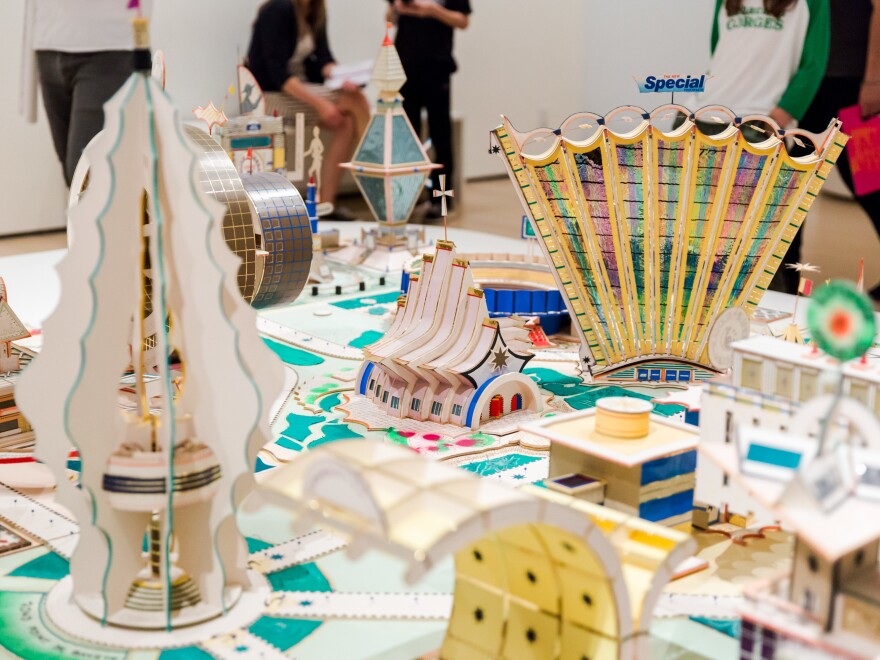
"Kimbembele Ihunga" (1994) envisions his small hometown as a glittering metropolis. Wide boulevards are lined with towering skyscrapers. Arcades are filled with grocery stores and restaurants. A high-speed train is pulling into a modernistic station whose shape resembles an old-fashioned cash register. The circular design of the power station is as festive-looking as a Ferris wheel. References to Kingelez and his family also abound, including the spacious soccer stadium that bears his name and a statue that pays homage to his father.

The works of Kingelez "exceed the bounds of both sculpture and architecture," writes Chika Okeki-Augulu, a professor of African and African-diaspora art at Princeton University, in an essay featured in the exhibit catalog. "They are symbolic texts on the state of our global, postcolonial world."
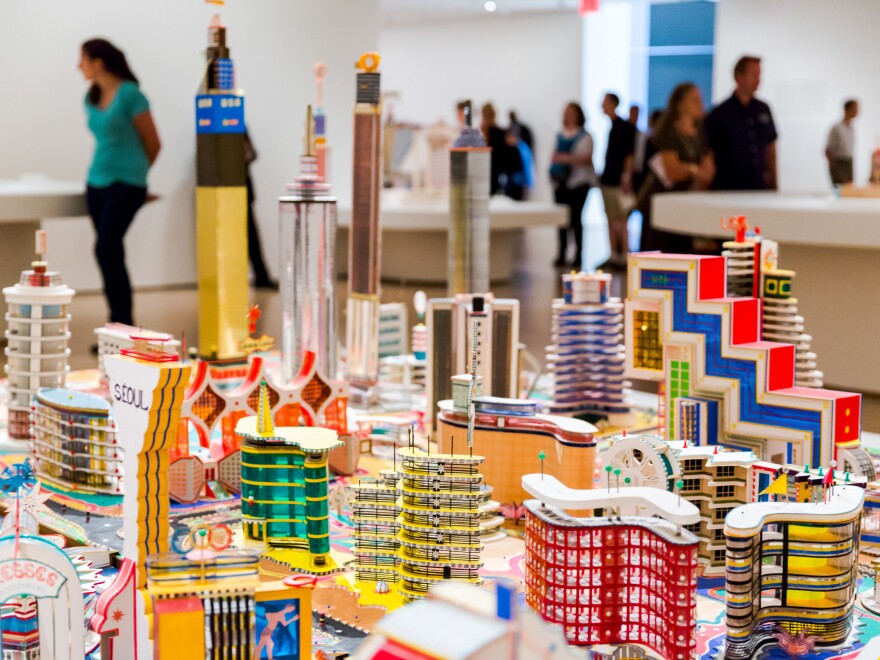
"Ville Fantome" (1995) is the artist's largest city construction. Its title means "City of Phantoms," says Suzuki, and it represents a place where the boundaries between the living and the dead have been erased. There's even a pont de la mort — bridge of death — that allows them to seamlessly travel back and forth between both realms. The skyscrapers are multi-hued and -shaped; each is labeled with a different country's name à la the World's Fair. Towering above them all is the shimmering gold and steel U.S.A. building, which features at its highest reaches one mini-tower upon another.
"There is no police force ... no soldiers ... no doctors," Kingelez wrote, because there is no need for them. "Here you live in a paradise, just like heaven."
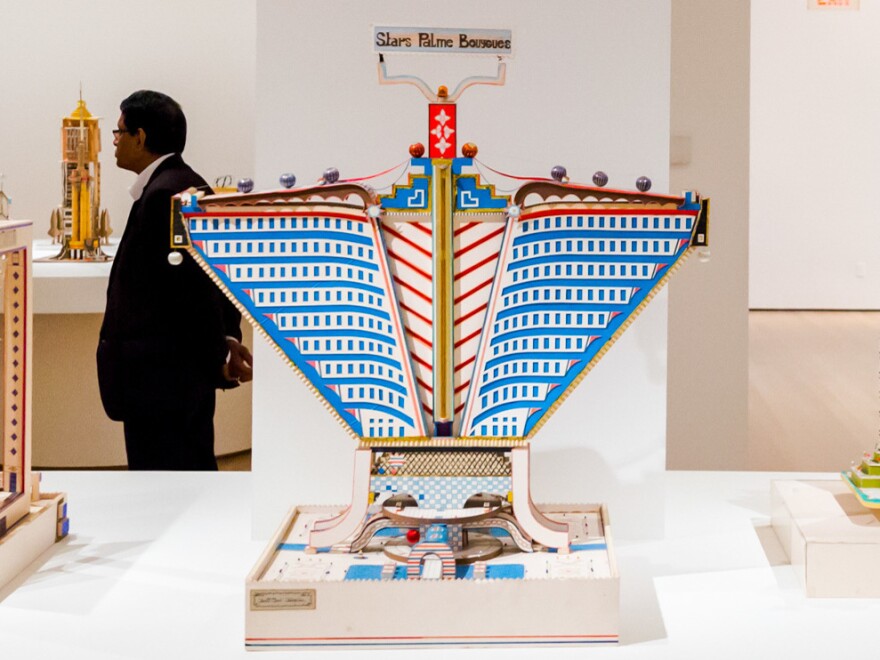
Diane Cole writes for many publications, including The Wall Street Journal and The Jewish Week, and is book columnist for The Psychotherapy Networker. She is the author of the memoir After Great Pain: A New Life Emerges. Her website is dianejcole.com.
Copyright 2023 NPR. To see more, visit https://www.npr.org.





